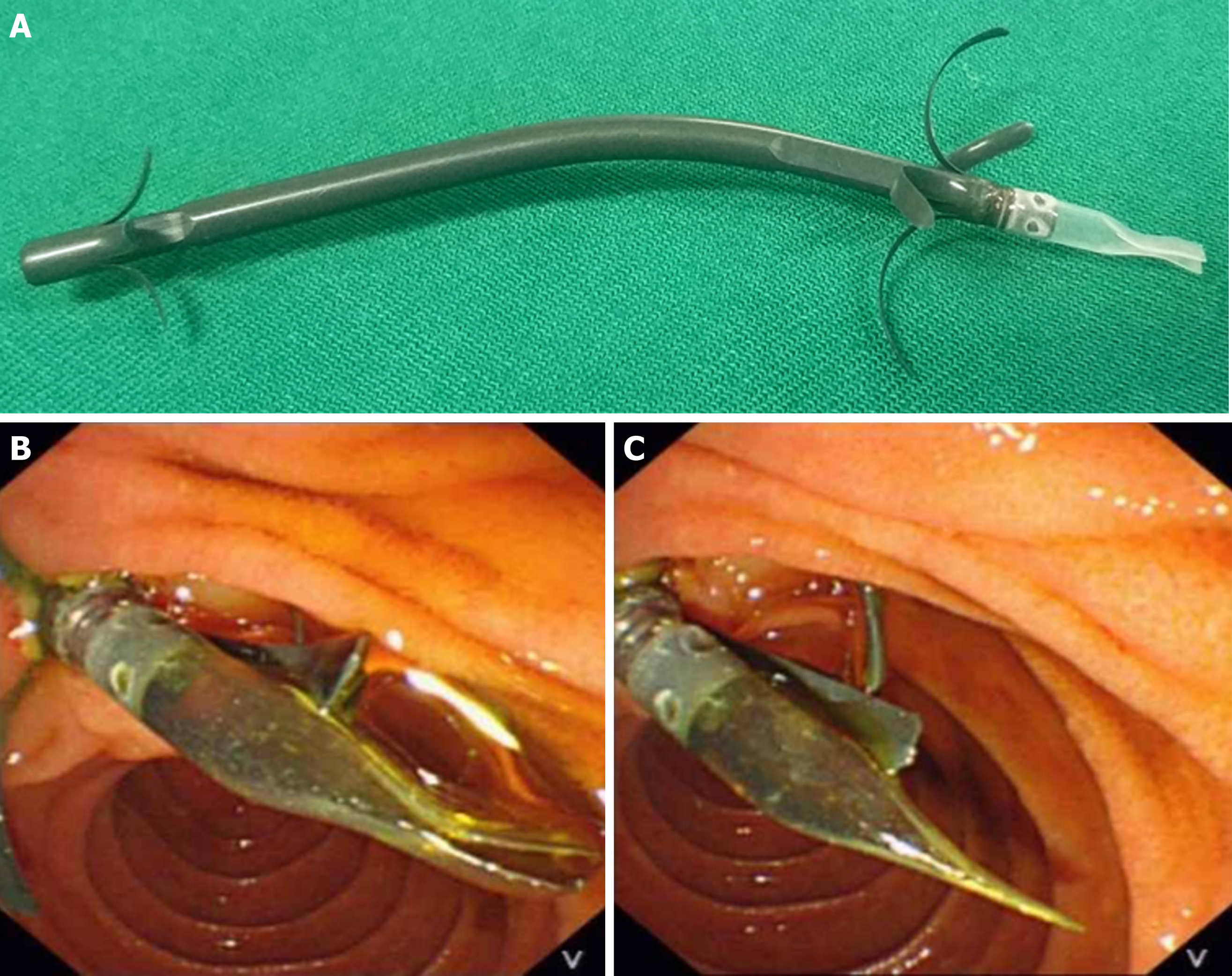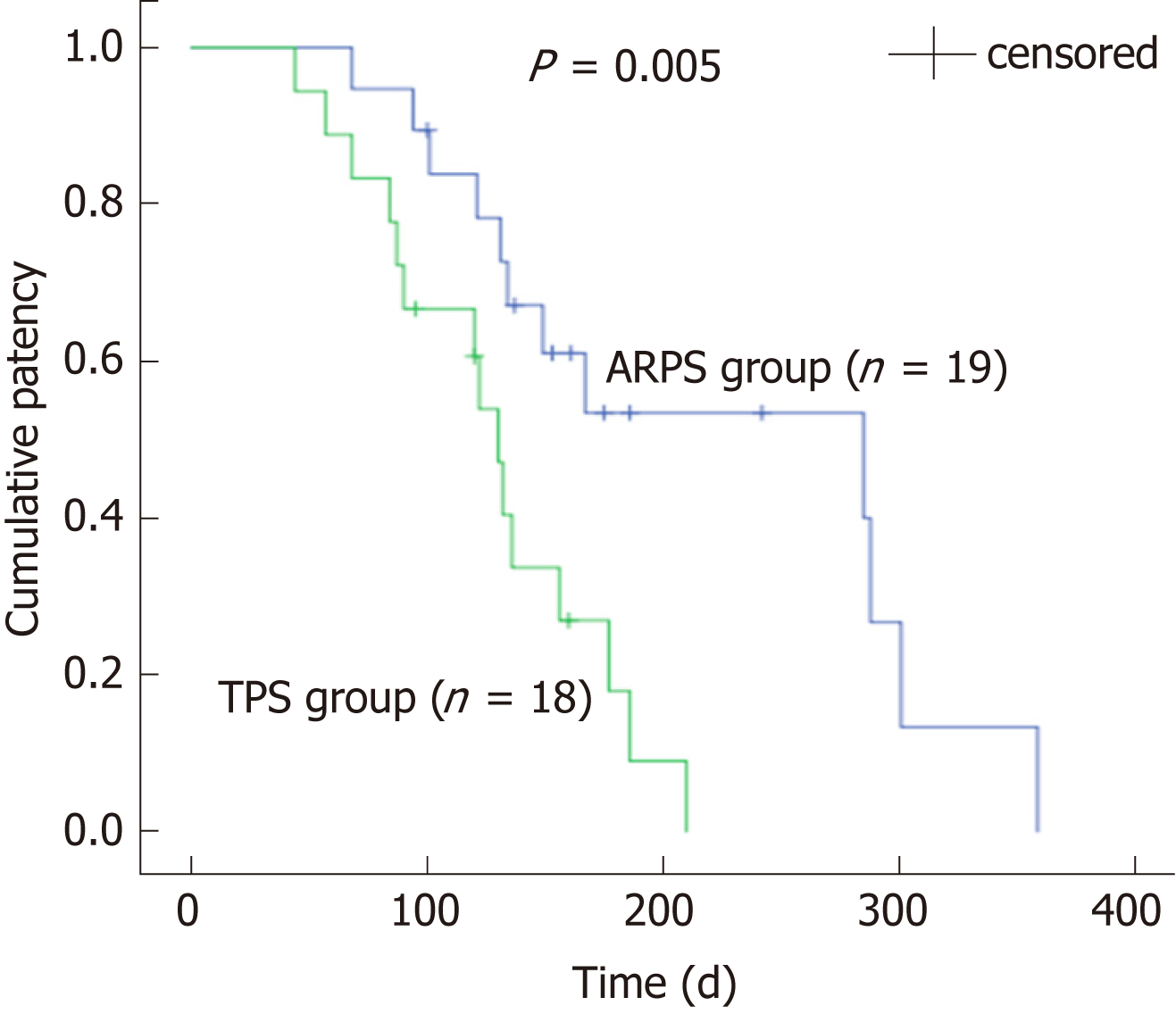Copyright
©The Author(s) 2019.
World J Gastroenterol. May 21, 2019; 25(19): 2373-2382
Published online May 21, 2019. doi: 10.3748/wjg.v25.i19.2373
Published online May 21, 2019. doi: 10.3748/wjg.v25.i19.2373
Figure 1 The new antireflux plastic biliary stent.
A: The newly designed antireflux plastic stent with a “duckbilled” valve attached to the duodenal end of the stent; B: The valve remains open and allows the antegrade flow of bile; C: The valve closes as the intestinal pressure increases, preventing the reflux of the duodenal contents.
Figure 2 Flowchart of patients involved in the trial.
ARPS: Antireflux plastic stent; TPS: Traditional plastic stent.
Figure 3 Kaplan-Meier curve comparing the cumulative patency of stent between the antireflux plastic stent group and the traditional plastic stent group (P = 0.
005, log-rank test). ARPS: Antireflux plastic stent; TPS: Traditional plastic stent.
Figure 4 Kaplan-Meier curve comparing the cumulative survival of patients between the antireflux plastic stent group and the traditional plastic stent group (P = 0.
900, log-rank test). ARPS: Antireflux plastic stent; TPS: Traditional plastic stent.
- Citation: Yuan XL, Wei B, Ye LS, Wu CC, Tan QH, Yao MH, Zhang YH, Zeng XH, Li Y, Zhang YY, Hu B. New antireflux plastic stent for patients with distal malignant biliary obstruction. World J Gastroenterol 2019; 25(19): 2373-2382
- URL: https://www.wjgnet.com/1007-9327/full/v25/i19/2373.htm
- DOI: https://dx.doi.org/10.3748/wjg.v25.i19.2373












